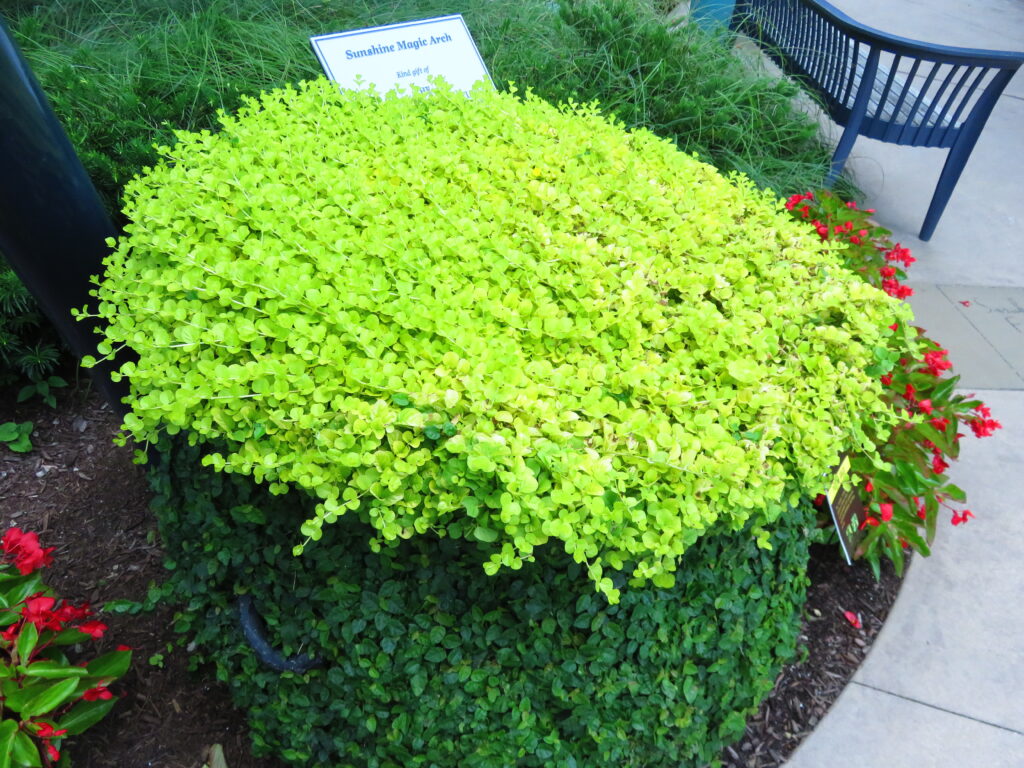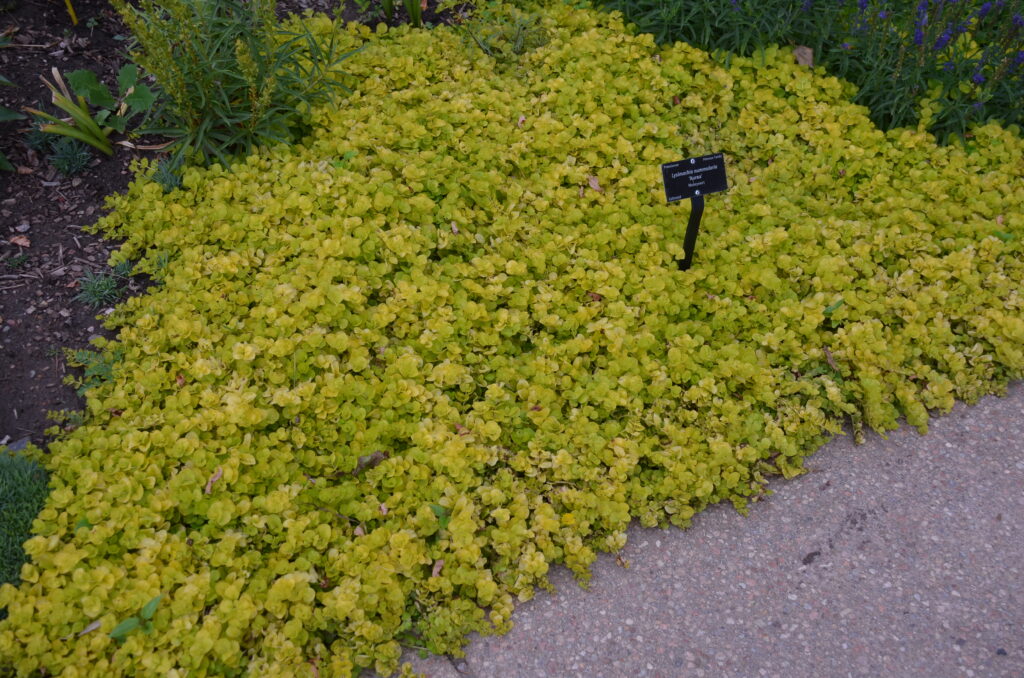
Creeping Jenny (Lysimachia nummularia ‘Aurea’, aka creeping yellow loosestrife, golden moneywort, and several more colloquial names). It is an herbaceous, semi-evergreen perennial in the primrose (Primulaceae) family native to Europe (USDA hardiness zones 3-8). Introduced in North America this ornamental ground cover grows aggressively. Be careful what you invite into your garden as this fast-growing plant can quickly take over a large part of your garden.
Creeping Jenny prefers moist partly shaded areas, but it grows almost as well in the sun, spreading quickly into lawns and planting beds. Also called ground ivy, this low-growing “creeper” is valued for its foliage, which makes colorful ground cover.

Kidney-shaped or rounded leaves lay low to the ground along vining stems or runners. Growing only a few inches in height, stems branch out. Leaves root readily when nodes contact soil and develop into a broad carpet. Aggressive creeping jenny also spreads via a slender rhizome.
It prefers moist areas such as wet meadows, swamps, banks of streams and ponds, along edges of roads and ditches. Among gardeners creeping jenny is becoming an invasive weed and ecological threat because of its competitive nature. It spreads both vegetatively and by seed dispersal. The tiny yellow cup-shaped flowers form at the leaf axils and are rarely noticed.
For its ornamental value, Golden Creeping Jenny can be used in containers, hanging baskets, and rock walls or as a ground cover. It will likely spread aggressively into borders or nearby lawns; creeping Jenny is difficult to control. After a harsh winter the plant’s recuperate potential is incredible.
Control of Weedy Creeping Charlie: Hand pulling or hoeing is difficult. Most effective control is any broadleaf herbicide that contains triclopyr, generally in combination with 2, 4-D, and Dicamba.

 Posted in
Posted in 
